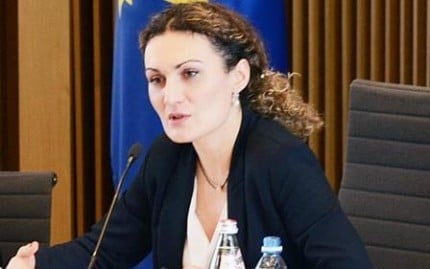Resume:
Gasification in villages adjacent to the occupation line was launched in 2014 and has already been completed. A total of 13,913 customers were gasified. In addition, 45 villages now have an electricity supply. Clean water and irrigation systems were also rehabilitated in villages adjacent to the occupation line (35 villages). Moreover, the population of these villages receives vouchers worth GEL 200 annually for heating during the winter. The state provides funding for the tuition fees of students living in these villages with the number of students with state funding increasing annually.
Analysis
The State Minister for Reconciliation and Civic Equality, Ketevan Tsikhelashvili, in her speech before the Parliament of Georgia’s committee sitting underlined the state of infrastructure in the villages adjacent to the occupation line and stated: “The gasification of all villages (along the occupation line) has been completed and we are talking about 14,000 customers. In addition, electrification has also almost been completed. All students from families living in these villages receive state funding. The number of students with funding increases annually with this number currently at 1,200. Clean water and irrigation systems have been repaired and rehabilitated. Moreover, we provide assistance to all families during the winter with monetary vouchers as well as with firewood vouchers.”
In 2010, the Government of Georgia’s State Strategyon the Occupied Territories: Bridging Communities through Engagement was adopted pursuant to the decree of the then President of Georgia (Mikheil Saakashvili). The Strategy gives the following definition of the occupation line: “A line of occupation established by the occupier force through which the occupied territories are detached from the rest of Georgia.”
There is a total of 62 villages adjacent to the occupation line. These are villages where artificial barriers (barbed wire fences) have been erected and which restrict access to agricultural land and other resources previously used by the population.
The state gasification programme for villages adjacent to the occupation line was launched in 2014 (see FactCheck’s article). As of today, the gasification process has been completed in each of those 62 villages adjacent to the occupation line according to the official statisticswith a total of 13,913 customers having been gasified. Further, a total of 45 villages along the occupation line have also been electrified.
In 2014, the state started to provide funding for students living in villages adjacent to the occupation line. In accordance with the ordinanceof the Government of Georgia of 31 December 2013, students who are enrolled in bachelor’s and master’s degree programmes with state accreditation as well as for those students who are studying to become medical doctors and dentists receive funding to cover their tuition fees.
State funding is provided in accordance to the tuition fee as determined by the institution of higher education although it should not exceed the amount of a full state scholarship for tuition fees for the year when the student begins study.
Table 1:
Number of Students Living Near the Occupation Line with State Funding in 2013-2018
| Academic Year | 2013-2014 | 2014-2015 | 2015-2016 | 2016-2017 | 2017-2018 | Total |
| Number of Students | 433 | 552 | 751 | 906 | 1,168 | 3,810 |
As illustrated by the table, the funding for students living in the villages adjacent to the occupation line has a tendency of growth with the number of students receiving funding at its highest at 1,168 in the current academic year.
FactCheck has already written about the topic of rehabilitating clean water and irrigation systems in villages adjacent to the occupation line (see article 1, article 2).As of today, clean water systems have been rehabilitated in 35 villages adjacent to the occupation line. Irrigation systems for 39 villages (covering 20,000 hectares of land) adjacent to the occupation line and which are used by 18,000 families have been improved as a result of rehabilitation work (Saltvisi-Tirifona irrigation system).
In her statement, Ketevan Tsikhelashvili also mentioned firewood vouchers provided to the population living in the villages adjacent to the occupation line.
The state providesvouchers worth GEL 200 annually during the winter to all families living in villages adjacent to the occupation line to offset their heating costs. Those families who are registered as natural gas customers receive a gas voucher worth GEL 200 annually whilst those families using firewood for heating receive firewood of the same monetary value.
Table 2:
Number of Families Receiving Winter Assistance in 2013-2018
| Year | 2013-2014 | 2014-2015 | 2015-2016 | 2016-2017 | 2017-2018 |
| Number of Families | 11,440 | 11,677 | 12,261 | 11,894 | 12,178 |
A total of 42,565 cubic meters of firewood resources were allocated in 2015-2017 in order to provide firewood for the population of villages adjacent to the occupation line.


















